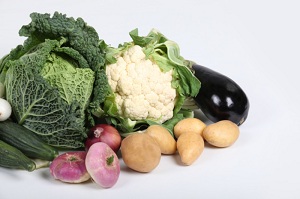
But this doesn’t mean that all salads are either boring or diet busters. With the right ingredients, a salad can make a delicious, healthy meal that hits all the right food groups.
Greens are good, but some are better
Of course, having lettuce as a base for your salad is nothing new. But other dark leafy vegetables, such as kale, chard and spinach, would be perfect for a healthy salad. They have lots of flavor and are packed with fiber, vitamins and minerals.
Fat – the bad
Where a good salad often goes wrong is when it’s covered in store-bought dressing, deep-fried croutons or chicken that has been breaded, fried or saturated with a high-fat sauce. This is the type of salad you often find at fast food or chain restaurants. However, most places do have healthier options that contain mainly fresh vegetables and lean grilled or broiled meats. Just be sure to steer clear of creamy dressings made from unhealthy oils and chemicals, or skip the dressing altogether.
Fat – the good
What’s surprising to most people is that not all fats are bad. We actually need high-quality fats to help our bodies absorb certain nutrients. These can be added to your salad in the form of eggs, avocados, coconut or olive oil, and other similar ingredients.
Make your own
The easiest way to make sure you’re getting the most nutrition out of your salad is to make it yourself. It’s also the best way to make sure your salad will be a flavorful meal that you’ll really enjoy. Try experimenting with different combinations of all your favorite fresh vegetables and lean proteins. Just be sure to choose organic vegetables and grass-fed proteins to avoid adding pesticides or other toxic chemicals to your healthy meal.
Dress it up
Dressings are often used to add flavor to salads that may not be all that fresh or are lacking quality ingredients. But salads made from fresh and flavorful organic ingredients are often more delicious without added dressings. If you feel the need to add a little something to top of your salad, try mixing up your own dressing using fresh organic herbs and spices with a little olive or coconut oil, and apple cider vinegar.
For more articles go to http://lifesportfitness.lifestyleezine.com

 We hear it all the time. Everyone should eat more fruits and vegetables. In fact, the Center for Disease Control suggests that eating a sufficient amount of fruits and vegetables could lower the risk of certain diseases. So why is it that we often reach for a sugary snack or other high-calorie foods when we’re in a hurry and hunger strikes?
We hear it all the time. Everyone should eat more fruits and vegetables. In fact, the Center for Disease Control suggests that eating a sufficient amount of fruits and vegetables could lower the risk of certain diseases. So why is it that we often reach for a sugary snack or other high-calorie foods when we’re in a hurry and hunger strikes? With people becoming increasingly intent on living a healthy lifestyle, there is a growing trend of individuals starting their own vegetable garden. A container vegetable garden is one of the best choices for garden lovers who want to grow some fresh vegetables during the summer but may have little yard space or simply don’t need a large garden area to grow a few fresh vegetables during the summer. If you want to enjoy some fresh vegetables and don’t want to spend a lot of time doing it, one of the easiest ways is to grow a container vegetable garden. Container vegetable gardens are becoming more and more popular. It is a great way to know exactly where and how your vegetables are grown.
With people becoming increasingly intent on living a healthy lifestyle, there is a growing trend of individuals starting their own vegetable garden. A container vegetable garden is one of the best choices for garden lovers who want to grow some fresh vegetables during the summer but may have little yard space or simply don’t need a large garden area to grow a few fresh vegetables during the summer. If you want to enjoy some fresh vegetables and don’t want to spend a lot of time doing it, one of the easiest ways is to grow a container vegetable garden. Container vegetable gardens are becoming more and more popular. It is a great way to know exactly where and how your vegetables are grown.  Most research shows that eating fresh vegetables is much better than eating canned or frozen ones. This is because they are fresh and therefore, still retain most of their ‘goodness’. Seasonal vegetables are also cheaper than other vegetables, which means you can stay healthy and lose weight on a budget. It can be more of a challenge to find familiar vegetables in winter, but I’ll list below some of the best seasonal vegetables for this time of year and ways to prepare/use them.
Most research shows that eating fresh vegetables is much better than eating canned or frozen ones. This is because they are fresh and therefore, still retain most of their ‘goodness’. Seasonal vegetables are also cheaper than other vegetables, which means you can stay healthy and lose weight on a budget. It can be more of a challenge to find familiar vegetables in winter, but I’ll list below some of the best seasonal vegetables for this time of year and ways to prepare/use them.